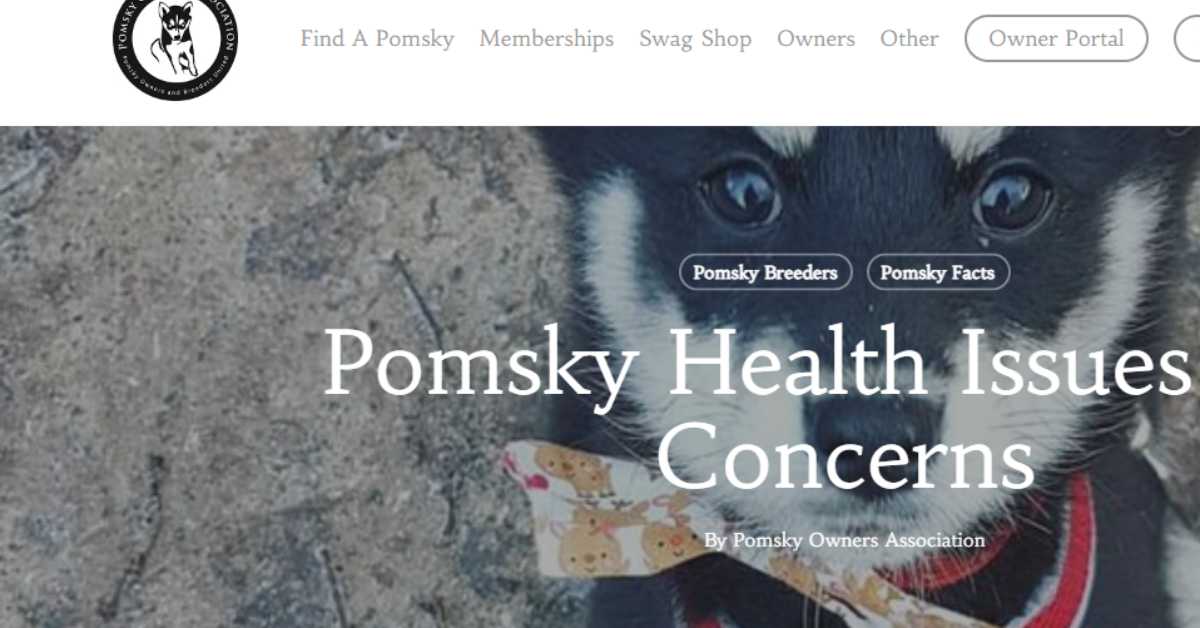As the popularity of Pomskies continues to soar, prospective owners find themselves captivated by the charm of this unique hybrid breed. However, despite their adorable appearance, there’s a looming concern — the unknown territory of Pomsky’s health issues. In this comprehensive guide, we delve into the current state of Pomsky’s health, potential hereditary conditions, essential health tests, and crucial tips for acquiring a healthy Pomsky companion.
Pomsky Health Issues
The Pomsky Owners Association (POA) emphasizes the novelty of the Pomsky breed, being in its first generation since its inception in the early 2010s. While there are no identified health issues as of now, the POA urges vigilance among owners and breeders to monitor and address potential concerns.
Insights from Veterinary Professionals
Dr. Shaw, a veterinarian from West Side Pet Hospital in Bend, Oregon, stresses the importance of continuous monitoring to ensure the long-term health of Pomskies. He advises breeders to be vigilant in identifying and eliminating genetic abnormalities for the breed’s well-being.
Potential Inherited Health Conditions

Understanding the hereditary health conditions of the Pomeranian and Siberian Husky, the parent breeds, is crucial. The Siberian Husky Club of America highlights canine hip dysplasia and eye defects as common concerns, while the American Pomeranian Club lists hip dysplasia, eye defects, luxating patellas, hypothyroidism, severe hair loss syndrome, and collapsing tracheas. Canine Hip Dysplasia: Exploring canine hip dysplasia, a polygenic disease, the guide outlines the risk, prevalence, and importance of OFA (Orthopedic Foundation for Animals) certification for testing hips and luxating patellas.
Eye Defects
Discussing the three primary eye defects affecting Siberian Huskies — juvenile cataracts, corneal dystrophy, and progressive retinal atrophy — the guide emphasizes the significance of CERF (Canine Eye Registration Foundation) exams for potential Pomsky owners.
Other Hereditary Conditions

The guide sheds light on Pomeranian-specific conditions such as luxating patellas, hypothyroidism, severe hair loss syndrome, and collapsing tracheas, providing insights from veterinarian Kate Willis. Pomsky Health Tests: To alleviate concerns, the guide recommends two primary health tests – OFA certification for hip dysplasia and luxating patellas and CERF exams for annual eye evaluations.
Tips for Buying a Healthy Pomsky
- Communication with Breeders: The guide emphasizes the importance of open communication with breeders. Asking about health tests, vaccinations, regular vet checkups, health guarantees, and breed club memberships is crucial.
- Vet References: Potential Pomsky owners are advised to request vet references from breeders. Conversations with the breeder’s vet provide insights into the health screening process and overall breeder quality.
- In-Person Visit and Previous Buyer Interaction: Visiting the breeder in person is encouraged to assess the living conditions and health of the parent dogs. Interaction with previous buyers can offer valuable perspectives on the breeder’s reputation and the long-term health of Pomskies.
Conclusion
As the Pomsky community navigates uncharted health waters, this guide serves as a compass for prospective owners. With a focus on education, vigilance, and responsible breeding practices, we aim to ensure a healthy and happy future for this enchanting hybrid breed. Remember, the key to a thriving Pomsky lies in knowledge, communication, and a commitment to their well-being.
Stay tuned to our website silentnews.org for more updates.



